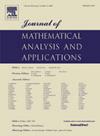Large sums of symmetric power coefficients of holomorphic cusp forms
IF 1.2
3区 数学
Q1 MATHEMATICS
Journal of Mathematical Analysis and Applications
Pub Date : 2025-07-08
DOI:10.1016/j.jmaa.2025.129878
引用次数: 0
Abstract
Given a non-CM primitive cusp form f of even weight k and level N, we let denote the m-th symmetric power lift of f. We denote by the sequence of normalized coefficients of the Dirichlet series associated to the L-function of . In this paper, we investigate the range of x (in terms of k and N) for which there are cancellations in the sum . We first prove that implies that for some . Assuming the Generalized Riemann Hypothesis (GRH) for , we also show that in the range and in the range .
全纯尖形的大量对称幂系数
给定一个偶权k、偶阶N的非cm原始尖形f,令symmf表示f的第m次对称幂升。我们用{λsymmf(N)} N∈N表示与symmf的l函数相关的Dirichlet级数的归一化系数序列。本文研究了求和S(x,symmf)=∑N≤xλsymmf(N)中存在消去的x(以k和N表示)的范围。我们首先证明了S(x,sym2f)= 0 (xlog2 (x))意味着对于某些n≤x, λsym2f(n)<0。假设L(s,symmf)的广义黎曼假设(GRH),我们也证明了s (x,symmf)=om(xlogm (x))在log (x) /log (n)→∞范围内,s (x,symmf)=om, λ (x)在x>;(kN)范围内,λ (x)。
本文章由计算机程序翻译,如有差异,请以英文原文为准。
求助全文
约1分钟内获得全文
求助全文
来源期刊
CiteScore
2.50
自引率
7.70%
发文量
790
审稿时长
6 months
期刊介绍:
The Journal of Mathematical Analysis and Applications presents papers that treat mathematical analysis and its numerous applications. The journal emphasizes articles devoted to the mathematical treatment of questions arising in physics, chemistry, biology, and engineering, particularly those that stress analytical aspects and novel problems and their solutions.
Papers are sought which employ one or more of the following areas of classical analysis:
• Analytic number theory
• Functional analysis and operator theory
• Real and harmonic analysis
• Complex analysis
• Numerical analysis
• Applied mathematics
• Partial differential equations
• Dynamical systems
• Control and Optimization
• Probability
• Mathematical biology
• Combinatorics
• Mathematical physics.

 求助内容:
求助内容: 应助结果提醒方式:
应助结果提醒方式:


